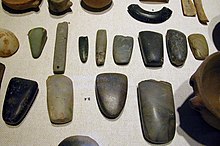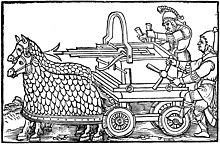Mental health is a term used to describe either a level of cognitive or emotional well-being or an absence of a mental disorder.[1][2] From perspectives of the discipline of positive psychology or holism mental health may include an individual's ability to enjoy life and procure a balance between life activities and efforts to achieve psychological resilience.[1] Mental health is the capacity to express our emotions and adapt to a range of demands
The World Health Organization defines mental health as "a state of well-being in which the individual realizes his or her own abilities, can cope with the normal stresses of life, can work productively and fruitfully, and is able to make a contribution to his or her community”.[3] It was previously stated that there was no one "official" definition of mental health. Cultural differences, subjective assessments, and competing professional theories all affect how "mental health" is defined.[4
History
In the mid-19th century, William Sweetzer loser was the first to clearly define the term "mental hygiene", which can be seen as the precursor to contemporary approaches to work on promoting positive mental health.[5] Isaac Ray, one of thirteen founders of the American Psychiatric Association, further defined mental hygiene as an art to preserve the mind against incidents and influences which would inhibit or destroy its energy, quality or development.[5]
At the beginning of the 20th century, Clifford Beers founded the National Committee for Mental Hygiene and opened the first outpatient mental health clinic in the United States.[5][6]
Perspectives
Mental wellbeing
Mental health can be seen as a continuum, where an individual's mental health may have many different possible values.[7] Mental wellness is generally viewed as a positive attribute, such that a person can reach enhanced levels of mental health, even if they do not have any diagnosable mental health condition. This definition of mental health highlights emotional well-being, the capacity to live a full and creative life, and the flexibility to deal with life's inevitable challenges. Many therapeutic systems and self-help books offer methods and philosophies espousing strategies and techniques vaunted as effective for further improving the mental wellness of otherwise healthy people. Positive psychology is increasingly prominent in mental health.
A holistic model of mental health generally includes concepts based upon anthropological, educational, psychological, religious and sociological perspectives, as well as theoretical perspectives from personality, social, clinical, health and developmental psychology.[8][9]
An example of a wellness model includes one developed by Myers, Sweeney and Witmer. It includes five life tasks — essence or spirituality, work and leisure, friendship, love and self-direction—and twelve sub tasks—sense of worth, sense of control, realistic beliefs, emotional awareness and coping, problem solving and creativity, sense of humor, nutrition, exercise, self care, stress management, gender identity, and cultural identity—are identified as characteristics of healthy functioning and a major component of wellness. The components provide a means of responding to the circumstances of life in a manner that promotes healthy functioning. Most of the US Population is not educated on Mental Health.[10]
Lack of a mental disorder
Mental health can also be defined as an absence of a major mental health condition (for example, one of the diagnoses in the Diagnostic and Statistical Manual of Mental Disorders) though recent evidence stemming from positive psychology (see above) suggests mental health is more than the mere absence of a mental disorder or illness. Therefore the impact of social, cultural, physical and education can all affect someone's mental health.




 Breads, cereals, rice, pasta and other grain products are a good source of complex carbohydrates, which give us the energy we need for our active lives. They also provide the B vitamins, iron, other minerals and fiber. Crackers, muffins, pancakes, grits, oatmeal and cereals are also found in this group. Vegetables provide Vitamin A (beta carotene) and Vitamin C, complex carbohydrates and fiber. They also provide the B vitamins, calcium, potassium, and other minerals. Vegetables are needed to help us in the fight against many diseases including cancer.
Breads, cereals, rice, pasta and other grain products are a good source of complex carbohydrates, which give us the energy we need for our active lives. They also provide the B vitamins, iron, other minerals and fiber. Crackers, muffins, pancakes, grits, oatmeal and cereals are also found in this group. Vegetables provide Vitamin A (beta carotene) and Vitamin C, complex carbohydrates and fiber. They also provide the B vitamins, calcium, potassium, and other minerals. Vegetables are needed to help us in the fight against many diseases including cancer. Fruit supplies Vitamin A (beta carotene) and vitamin C, potassium and some other minerals to keep our skin, eyes and gums healthy. Fruit is also a good source of carbohydrate and fiber. Enjoy fruits for a nutritious, sweet snack. What about snack foods that we all like to eat sometimes? Small amounts of candy, soft drinks, and other sweets can be eaten occasionally if you fill up on foods from the basic food groups first. But remember, these foods should not be eaten everyday. Try snacking on foods that come from each of the different food groups of the food pyramid.
Fruit supplies Vitamin A (beta carotene) and vitamin C, potassium and some other minerals to keep our skin, eyes and gums healthy. Fruit is also a good source of carbohydrate and fiber. Enjoy fruits for a nutritious, sweet snack. What about snack foods that we all like to eat sometimes? Small amounts of candy, soft drinks, and other sweets can be eaten occasionally if you fill up on foods from the basic food groups first. But remember, these foods should not be eaten everyday. Try snacking on foods that come from each of the different food groups of the food pyramid.